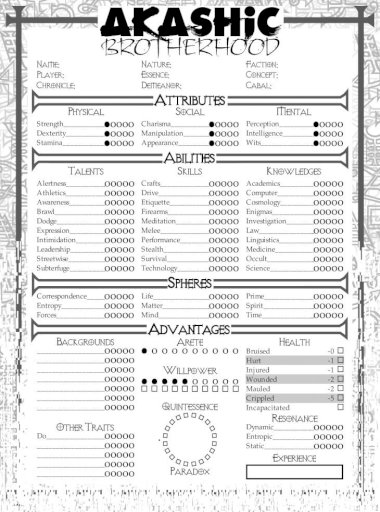

The Drahma Sutra divides Do into eight “limbs,” or areas of study. Fewer people are willing to give up their freedom without asking some serious questions of the “masters.”

In the past, this was done to prevent selfish or lazy students from pogressing, but in the 21st century, the oldest forsm of Do have succumbed to both the Technocratic view of the body (which has made some of the traditional Do skills, such as body hardening, more dangerous than useful).

The techniques are often taught with n individual adaptation and little guidance beyond the traditional forms. Few students master the strictest for mof Do as laid out in the Drahma Sutra. The Li-Hai and associated schools such as the Roda d'Oro take the loosest approach to the teachings. This structure has been used for the past 2300 years with little change. The styles of Do, as well as it's name were codified for the first time. The Jnani composed the Drahma Sutra from the recollections of the Akashic Record and the bitter experiences of the Himalayan warriors and pacifist sages. These new sects emphasized ethical duty and pacifism, reigning in the worst excessess of the Warring Fist. In reponse, the Akashayana accepted groups such as the Li-Hai and Buddist magi into the fold. Impractical techniques died with their users, and corrupt warriors revealed themselves when they quickly reincarnated, thirsty for revenge. The Warring States Period and the Himelayan Wars provided a brutal testing ground for Do's ethics and methods. Drala Yoga, Akashmukti and Jou Chuan were just three of the many arts formed out of expediency, egotism, or both. Furthermore, a gifted student of these arts grew beyond the limitations of the practice, and showed herself to be ready for the Brotherhood and it's undiluted mysteries.ĭo divided into hundred of styles to serve the needs of a particular Brother or group. These were intentionally watered-down or distorted varieties of Do that served their practitioners well enough but prevented the truly dangerous methods of the art from falling into the wrong hands. In response, the Brotherhood began teaching gate arts to the people.

The ancient techniques of Indian, Chinese and Korean ascetics and warriors influenced and were influenced byt the peoples that the early Akashi encountered. The Vajrepani pioneered Wu Chuan, to protect the Jnani and Kannagara from harm. To discriminate between “important” and “unimportant” acts could only blind an Akashic from the truth of Drahma.Īfter Meru's fall, these acts were used to ensure the Brotherhood's survival through the persecutions and political upheavals. Gardening, war and song were all approached this way. These trace their history to Meru, whose sages performed every act with focus and sincerity. The ancient sects of the Akashics have always practiced holistic disciplines that cultivate the mind, body, and spirit.


 0 kommentar(er)
0 kommentar(er)
